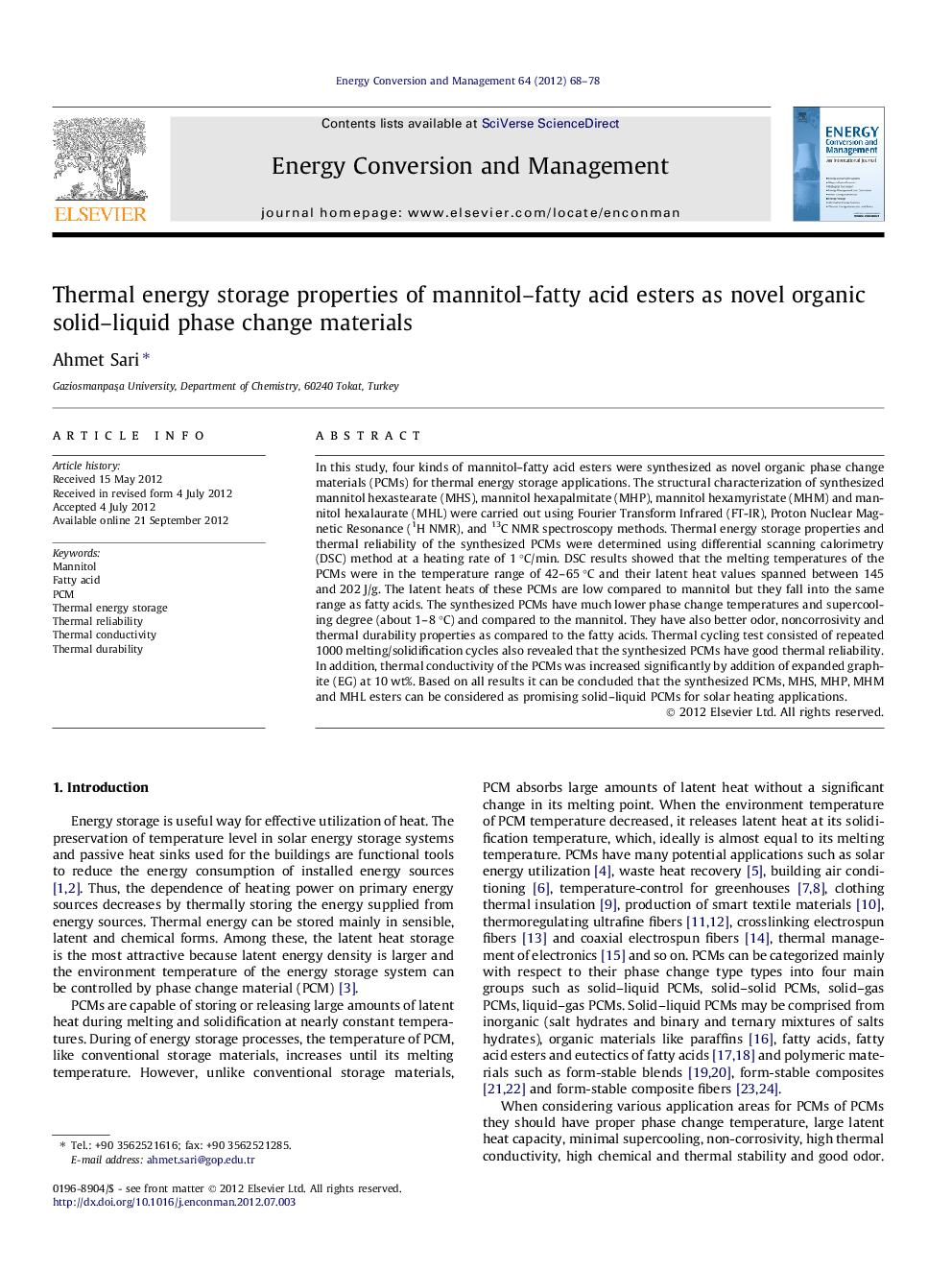| Article ID | Journal | Published Year | Pages | File Type |
|---|---|---|---|---|
| 761107 | Energy Conversion and Management | 2012 | 11 Pages |
In this study, four kinds of mannitol–fatty acid esters were synthesized as novel organic phase change materials (PCMs) for thermal energy storage applications. The structural characterization of synthesized mannitol hexastearate (MHS), mannitol hexapalmitate (MHP), mannitol hexamyristate (MHM) and mannitol hexalaurate (MHL) were carried out using Fourier Transform Infrared (FT-IR), Proton Nuclear Magnetic Resonance (1H NMR), and 13C NMR spectroscopy methods. Thermal energy storage properties and thermal reliability of the synthesized PCMs were determined using differential scanning calorimetry (DSC) method at a heating rate of 1 °C/min. DSC results showed that the melting temperatures of the PCMs were in the temperature range of 42–65 °C and their latent heat values spanned between 145 and 202 J/g. The latent heats of these PCMs are low compared to mannitol but they fall into the same range as fatty acids. The synthesized PCMs have much lower phase change temperatures and supercooling degree (about 1–8 °C) and compared to the mannitol. They have also better odor, noncorrosivity and thermal durability properties as compared to the fatty acids. Thermal cycling test consisted of repeated 1000 melting/solidification cycles also revealed that the synthesized PCMs have good thermal reliability. In addition, thermal conductivity of the PCMs was increased significantly by addition of expanded graphite (EG) at 10 wt%. Based on all results it can be concluded that the synthesized PCMs, MHS, MHP, MHM and MHL esters can be considered as promising solid–liquid PCMs for solar heating applications.
Graphical abstractFigure optionsDownload full-size imageDownload as PowerPoint slideHighlights► Four kinds of mannitol–fatty acid esters were synthesized as novel organic PCMs for thermal energy storage applications. ► The synthesized PCMs were characterized using FT-IR, 1H NMR, 13C NMR, DSC and TGA methods and thermal cycling test. ► The melting temperatures and latent heat values of the PCMs were in the range of 42–65 °C and 145–202 J/g, respectively. ► Thermal conductivity of the PCMs was increased significantly by addition of EG with especially 10 wt%. ► The synthesized PCMs are promising organic PCMs for solar heating applications.
